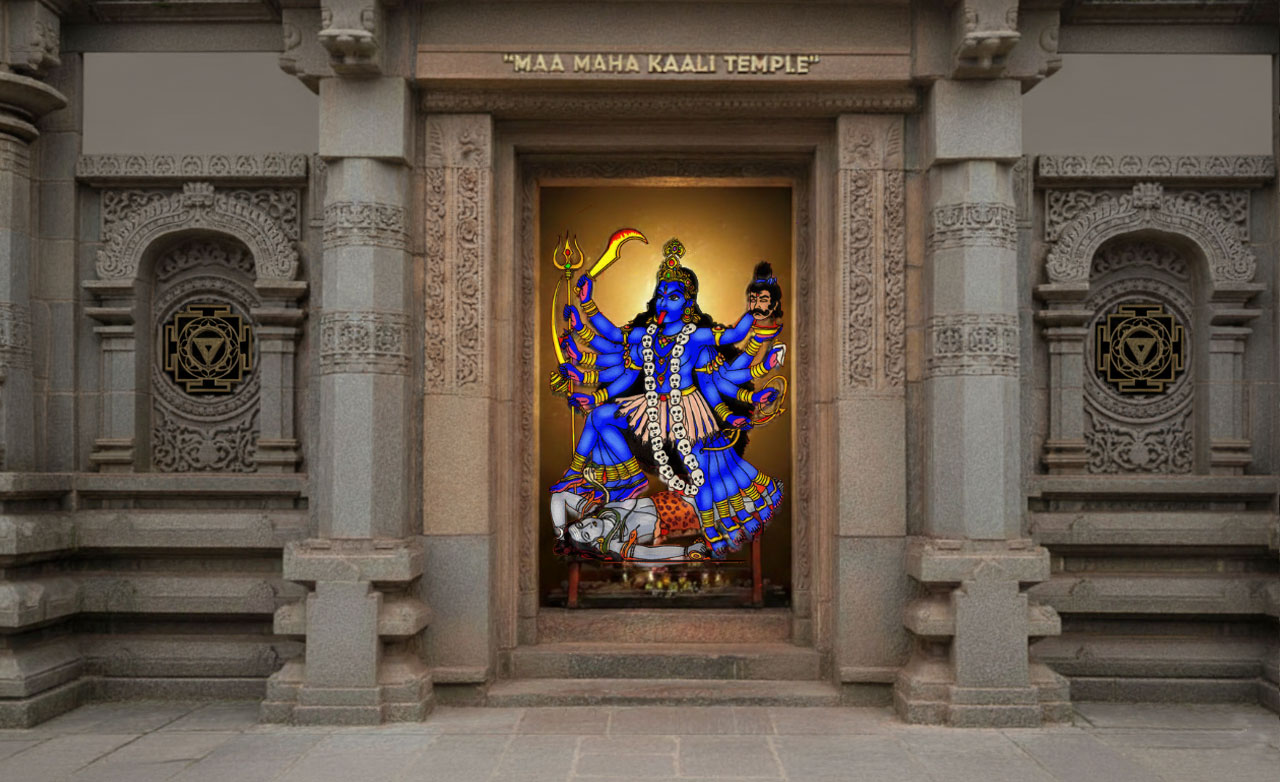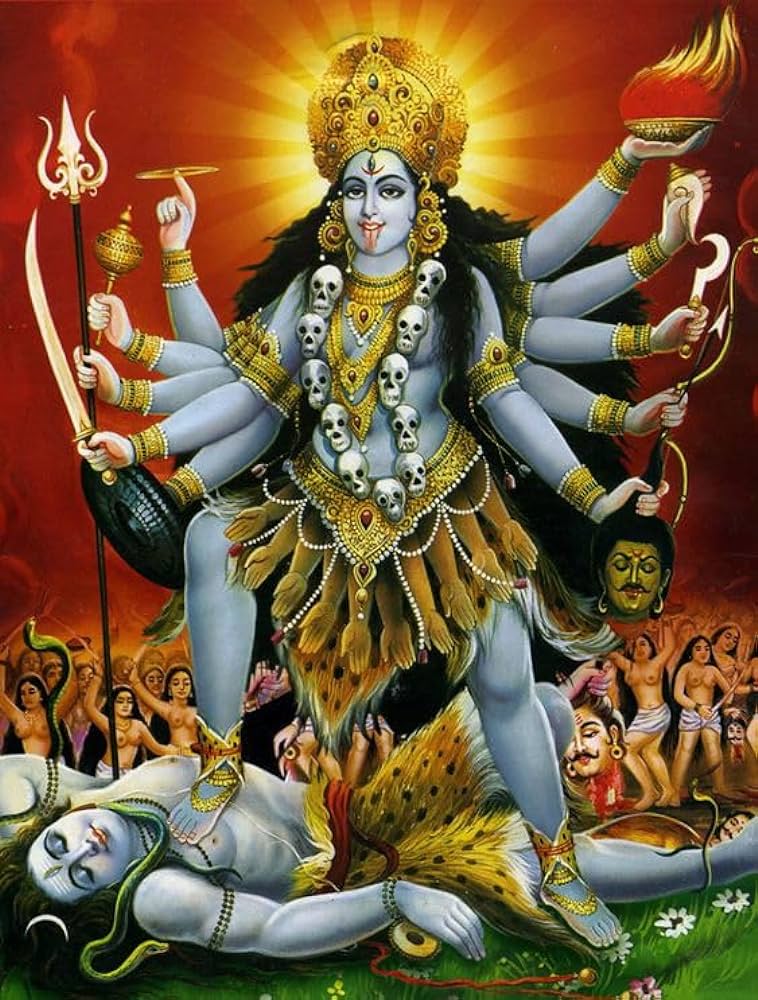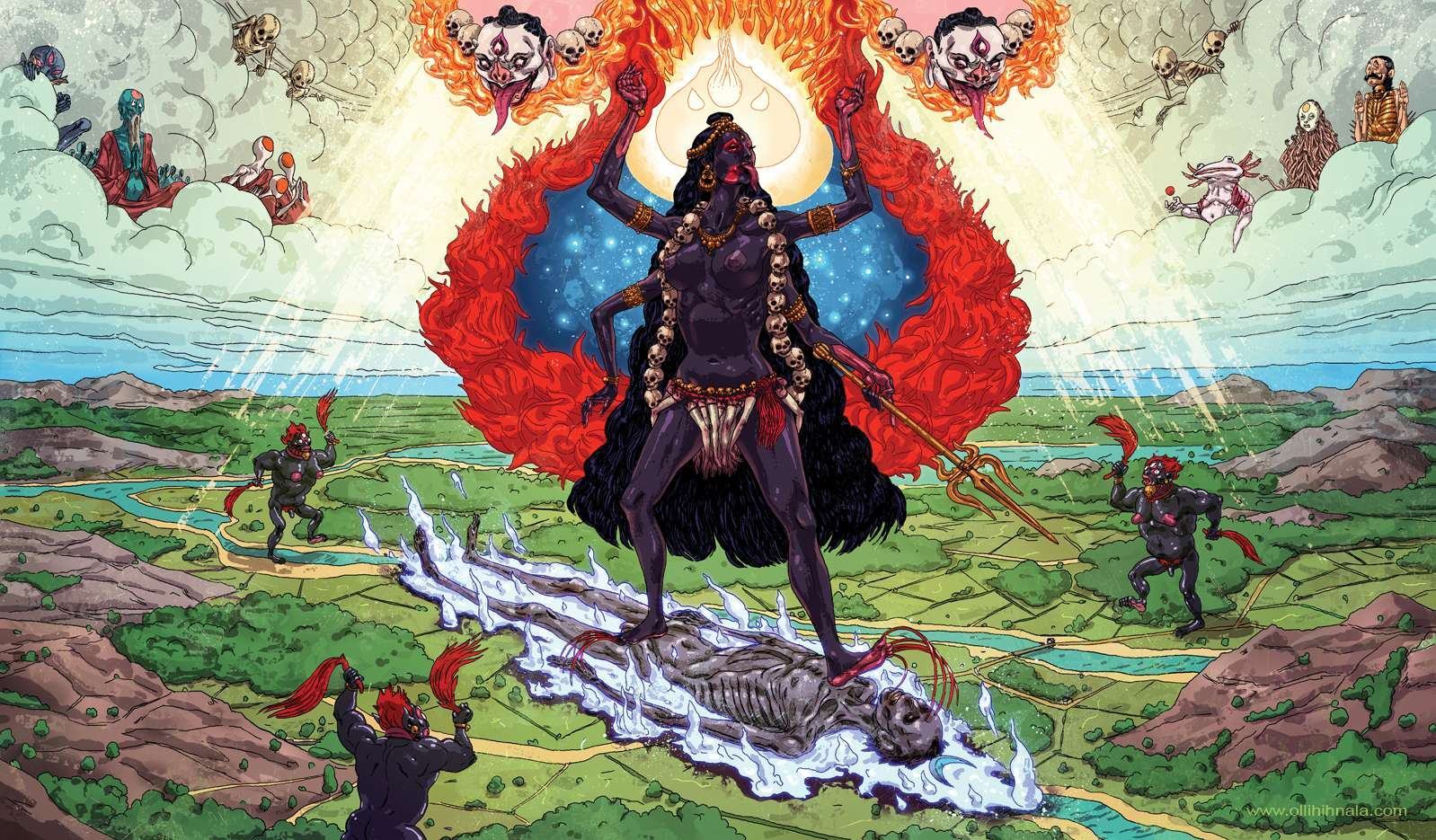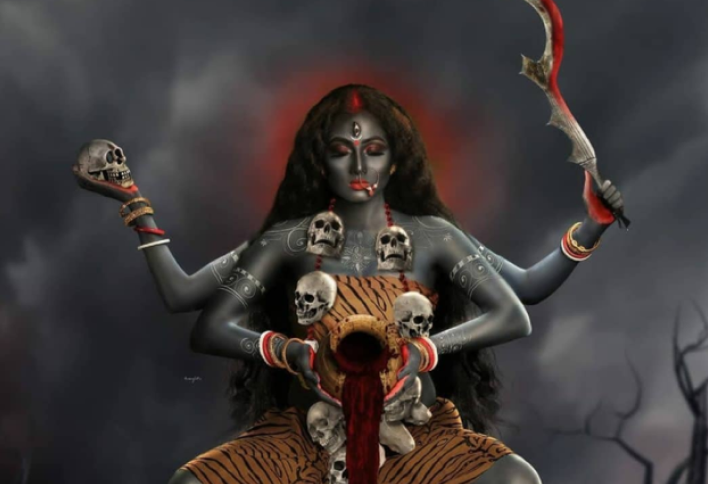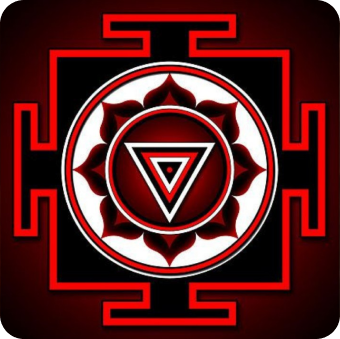Welcome to the Digital Temple For The Worship Of "Maa Maha Kaali"
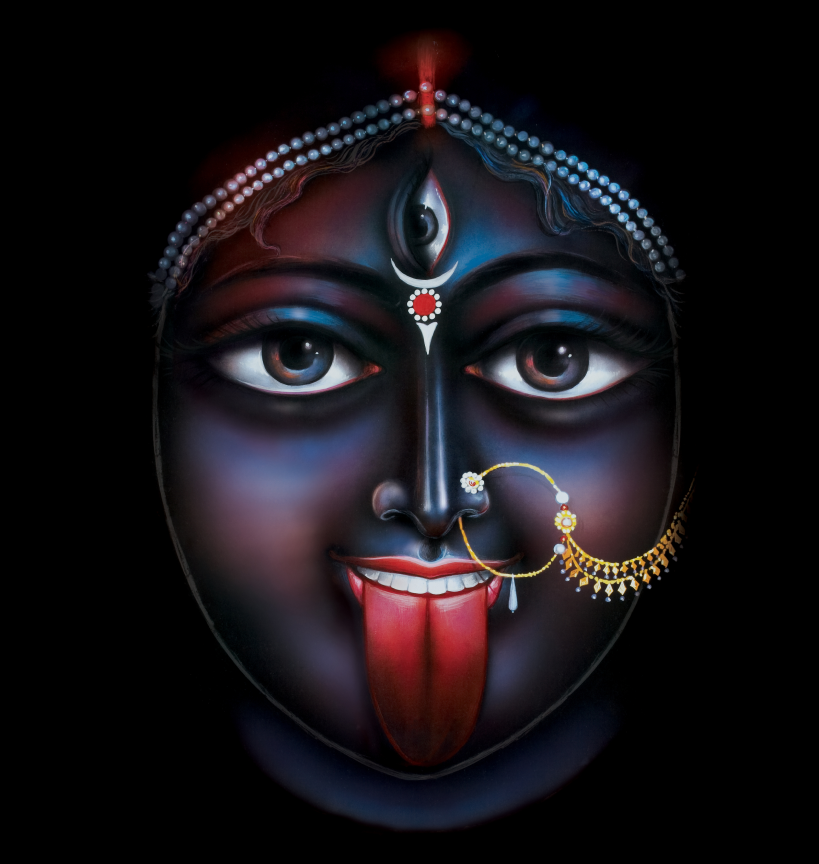
DHYANA
Meditation On
Maa Maha Kaali
“OṀ. I Revere Maa Maha Kaali, Who Holds In Her Divine Hands The Sword, Discus, Mace, Arrow, Bow, Iron Club, Spear, Sling, human head, And Conch; Who Is Three-Eyed, Adorned On All Her Divine Limbs, And Sparkling Like a sapphire; Who Has Ten Faces And Ten Feet; And Whom lord brahma Extolled while lord vishnu slept, in order To Slay madhu and kaitabha.”
– From The Meditation On Maa Maha Kaali, First Carita, Of “The Devi Mahatmya”
- Maa Maha Kaali Is Depicted With Ten Divine Hands, Symbolizing the ten directions:
- the four cardinal points,
- the intermediate points, and
- the points above and below
- This conveys the knowledge Of The Divine Omnipresence.
- Maa Maha Kaali’s Sword Symbolizes the knowledge that destroys ignorance by severing what is apparent and transitory from What Is Real And Eternal.
- The Discus Symbolizes the constantly turning wheel of time, which relentlessly and inevitably destroys all that has name and label.
- The Mace Symbolizes the destruction of unrighteousness.
- The Bow Symbolizes the tamasic aspect of ego.
- Accompanying The Bow, The Arrow Symbolizes the sensory and motor organs.
- The Iron Bar Symbolizes restraint or self-control.
- The Spear Symbolizes the penetrating insight of spiritual awareness.
- The Sling Symbolizes To Affect Over Distances
- The Trident (Trishula) Symbolizes the past, present, and future, as well as creation, preservation, and destruction.
- The severed human head symbolizes the vanquished ego, signifying the transcendence of the limitations of false ego-based individual self, and the realization Of The True Self.
- The skull cup (kapala) Signifies the consumption of negative traits and impurities.
- The Conch Symbolizes the auspicious sound with the power to awaken the awareness Of The Divine Reality and the destruction of ignorance.
- Maa Maha Kaali Is Depicted With Three Eyes That Witness the past, present and future, Which Is Symbolic Of Divine Omniscience.
- Maa Maha Kaali Is Depicted In Blue-Black Complexion Signifying the infinitude of the night sky.
GALLERY
Images Of The Depiction Of Maa Maha Kaali As Many Divine Forms
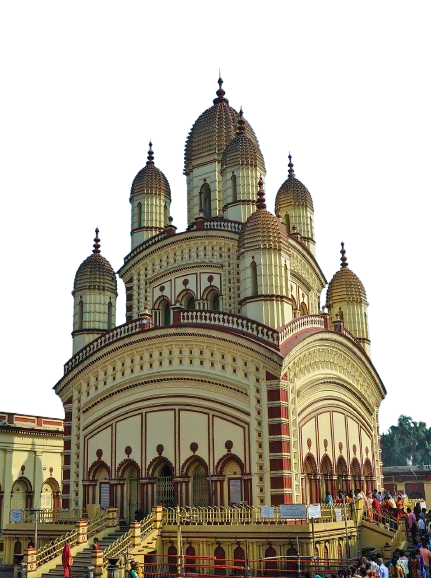
The Temples around the world for
the worship Of Maa Maha Kaali
CONTRIBUTIONS
Contribution as a form of
worship Of Maa Maha Kaali
Contribution as a form of worship Of Maa Maha Kaali
Utilize the skills Bestowed Upon you By Maa Maha Kaali as your contribution in worship of The Divine Mother. We invite you to share devotional paintings, poetry, or any artwork of your choice Dedicated To Maa Maha Kaali.
Your contributions will be featured on The Temple Website, providing an opportunity for you to worship The Divine Mother and seek Blessings.
Blog
Articles dedicated to the worship Of Maa Maha Kaali
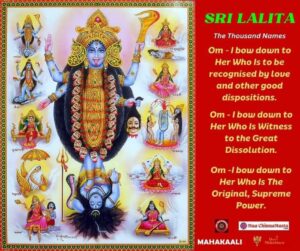
Dakshina Kali is the most widely worshipped form, depicted standing on Lord Shiva.
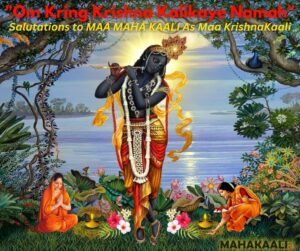
Dakshina Kali is the most widely worshipped form, depicted standing on Lord Shiva.
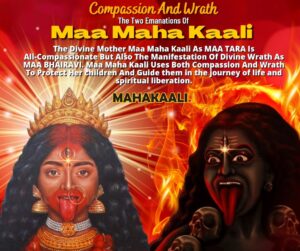
Dakshina Kali is the most widely worshipped form, depicted standing on Lord Shiva.
FREQUENTLY ASKED QUESTIONS
FAQs and Answers
Maa Maha Kaali, often simply Referred To As Maa Kaali, Is A Powerful And Fierce Aspect Of The Divine Mother In traditions of Indian subcontinent. Maa Maha Kaali Is Associated With Kaal or Time, Creation, Transformation and Dissolution. Maa Kaali Is Revered As The Divine Mother Of Death And Rebirth, Symbolizing the cycle of life And The Divine Mother’s Power To Destroy evil and ignorance. Maa Maha Kaali Is Also Venerated As The Ultimate Reality Or Brahman, Transcending the material world.
Maa Maha Kaali and speaks about Battles And Other Myths. The worship Of
Maa Kaali became especially significant during the medieval period with the rise of “shaktism”, a sect that Venerates The Divine Mother As The Supreme Deity. However, it is known that in the Indian tradition and culture the act of writing down Sacred Subjects is considered disrespectful – that Sacred, Holy And Divine Matters should be preserved in the heart and mind, not written down somewhere as it is believed that the Spoken Word and Written Text or Symbol Are Alive, and although inanimate similar to a mountain, Are Expressions Of The Divine with the consciousness of the human and other entities. As the mountain may often erupt as the volcano, so do The Seemingly Inanimate Forms Remain Alive. In Ancient Indian traditions the spoken word- vibrations- are given the highest significance, as it is considered to be the subtlest form of interaction – which The Divine Seem To Prefer More. Spoken Words retain the Formlessness Nature Of The Divine more than Taking Any Form, i,e, written text. In fact, those writing down to remember would be considered inferior to others who retained the vedas, scriptures and wisdom in their minds. Therefore, The Sacred Texts, Information, historical facts were always passed down orally, over generations, with complete integrity of information intact – at least within selective communities. Such as the kaula and other traditions which Revere The Divine Mother As Maa Maha Kaali. India is famous for the oral tradition of – especially the fact of retaining integrity of information due to the highly careful way of communicating and handling by the shishyas from the gurus. Similarly, The Myth Of The Divine Mother Maa Maha Kaali is known to be much older than the oldest written texts found or discovered. They are said to be hundreds of thousands of years old. In many large and living communities, they are fully convinced that the Myths are many millions of years old.
Common practices include:
– Puja (ritual worship): Offering oblation flowers, incense, and food To The Idol Or Image Of The Depiction Of
Maa Maha Kaali.
– Chanting mantras: Reciting specific prayers and mantras for the worship Of Maa Kaali.
– Meditation: Focusing On The Depiction Of The Divine Form Of Maa Maha Kaali.
– Tantric rituals: Involves more esoteric practices that may include the Yantras and mantras for the worship Of
Maa Maha Kaali.
Some popular mantras for the worship Of Maa Kaali include:
– “Maa Kaali Mantra”: “Om Krim Maa KaliKayai Namah” (I bow To The Divine Mother Maa Kaali)
– “Maha Kaali Mantra”: “Om Sri Maa Maha KaliKayai Namah”
– “Maa Kaali Gayatri Mantra”: “Om Maa Maha Kalikayai Cha Vidmahe SmashanaVasinyai Cha Dhimahi Tanno Maa Kaali Prachodayat”
Maa Maha Kaali is often depicted holding various Weapons, each symbolizing different aspects of Her Power:
- Maa Maha Kaali Is Depicted With Ten Divine Hands, Symbolizing the ten directions:
- the four cardinal points,
- the intermediate points, and
- the points above and below
- This conveys the knowledge Of The Divine Omnipresence.
- Maa Maha Kaali’s Sword Symbolizes the knowledge that destroys ignorance by severing what is apparent and transitory from What Is Real And Eternal.
- The Discus Symbolizes the constantly turning wheel of time, which relentlessly and inevitably destroys all that has name and label.
- The Mace Symbolizes the destruction of unrighteousness.
- The Bow Symbolizes the tamasic aspect of ego.
- Accompanying The Bow, The Arrow Symbolizes the sensory and motor organs.
- The Iron Bar Symbolizes restraint or self-control.
- The Spear Symbolizes the penetrating insight of spiritual awareness.
- The Sling Symbolizes To Affect Over Distances
- The Trident (Trishula) Symbolizes the past, present, and future, as well as creation, preservation, and destruction.
- The severed human head symbolizes the vanquished ego, signifying the transcendence of the limitations of false ego-based individual self, and the realization Of The True Self.
- The skull cup (kapala) Signifies the consumption of negative traits and impurities.
- The Conch Symbolizes the auspicious sound with the power to awaken the awareness Of The Divine Reality and the destruction of ignorance.
- Maa Maha Kaali Is Depicted With Three Eyes That Witness the past, present and future, Which Is Symbolic Of Divine Omniscience.
- Maa Maha Kaali Is Depicted In Blue-Black Complexion Signifying the infinitude of the night sky.
Maa Kaali’s Blue-Black Complexion Symbolizes the infinitude of the night sky and the infinite nature of time and space. It Also Symbolizes Maa Maha Kaali’s Transcendence Of All Forms And Attributes. The Dark Color Indicates That Maa Maha Kaali Is Beyond the physical realm And Embodies The Void From Which all creation emerges.
